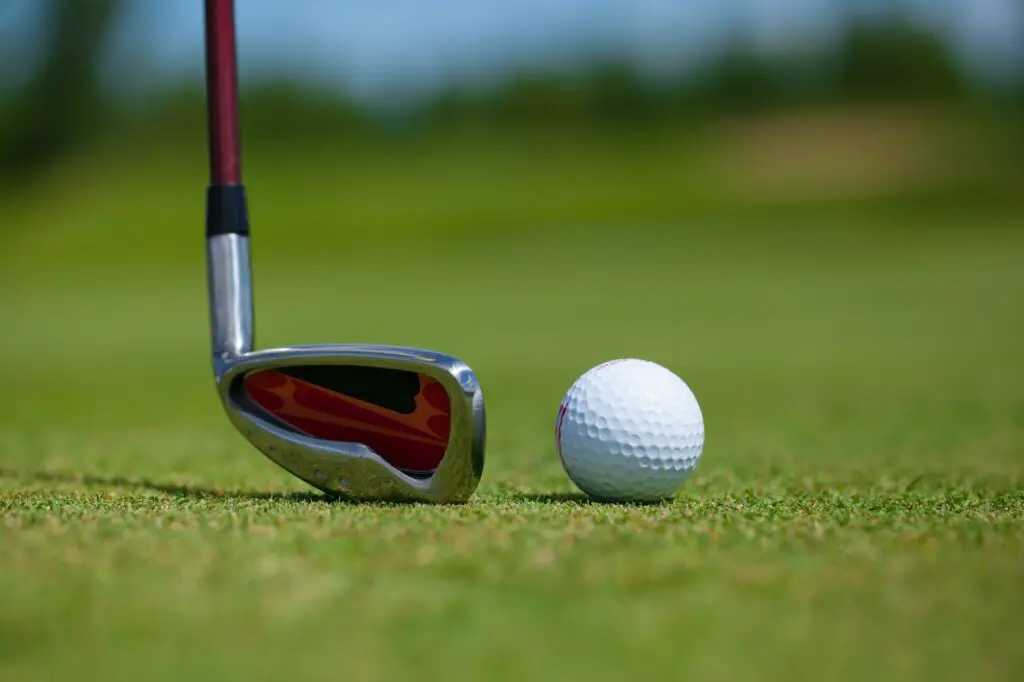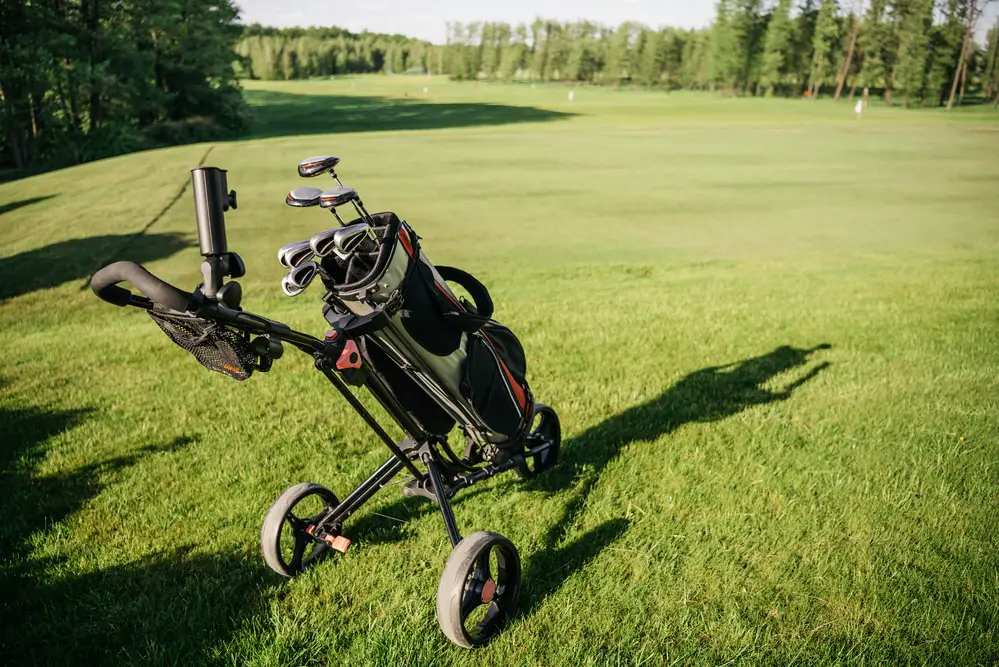Last Updated on June 6, 2023
Golf is a beloved recreational and competitive sport, but it can be expensive to maintain. One of the biggest expenses is buying golf irons—the most important clubs in your set. But how long do golf irons last? This article will explore the factors that determine how long golf irons last, so you can make sure you’re getting the most out of your purchase.
Factors Affecting Durability
The durability of golf irons depends largely on a few key factors. Damage prevention is important to keep the iron in good condition, as well as storing it in ideal conditions when not in use. The quality of manufacturing also affects how long iron will last, with higher-quality materials and construction able to withstand more wear and tear than lower quality models. Wear patterns can occur over time due to frequent use; however, even infrequent users should consider using covers or protection to prevent damage caused by outside elements. Finally, frequency of use is another factor that determines longevity – clubs used regularly may need replacing sooner than those used sporadically. Thus, all these aspects must be taken into account when assessing an iron’s life expectancy.
Storage and Maintenance Practices
Moving on from the factors affecting durability, proper storage and maintenance of golf irons are essential for their longevity. Here are some key practices to follow:

- Clean them after each use using a soft cloth dampened with warm water and mild soap.
- Store golf irons in a cool, dry place away from direct sunlight or extreme temperatures.
- Replace worn-out grips when necessary as they help maintain clubhead stability.
- Use protective covers when transporting your golf clubs to prevent any damage.
- Inspect the heads regularly for any signs of wear or tear so that you can replace them if needed.
Maintaining golf irons properly not only helps improve performance but also extends their life span significantly. Regular cleaning, storing and replacing parts will ensure that your equipment stays in top condition and allows you to enjoy playing the game without worrying about replacements every few months.
Quality of the Iron
The quality of the golf iron is determined by several factors, including the construction material, clubhead design, shaft stiffness, and clubface grooves. Each factor plays an important role in how long a golf iron can last.
| Factor | Effect on Longevity |
|---|---|
| Construction Material | Durability |
| Clubhead Design | Performance |
| Shaft Stiffness | Accuracy |
| Clubface Grooves | Spin & Control |
A good quality iron should be made from durable materials that will not crack or break easily during gameplay. The clubhead design should make it easier for players to hit their shots with greater accuracy and distance. Additionally, having a stiffer shaft helps keep the ball straight while increasing the maximum distance off the tee. Lastly, more prominent grooves on the clubface help create spin and control around the greens upon impact.
Frequency of Use
The frequency of use is a major factor in determining how long golf irons last. The more often one uses their golf irons, the sooner they will need replacing due to wear and tear. This doesn’t mean that you have to be an avid golfer for your irons to last; rather, it means that if you are using them frequently and intensively, then you should expect a shorter lifespan from your clubs. An amateur who plays once or twice a month may find their irons lasting longer than someone playing several times per week. Golfers who play regularly but don’t hit with as much power also tend to get more mileage out of their clubs.
Types of Damage to Look Out For
Golf irons can last for many years if they are taken care of properly. However, there are several types of damage that need to be looked out for in order to make sure your clubs remain functional and reliable:

- Rusting – If you don’t clean and dry your iron after playing or store it in a damp area, the club head will start to corrode. This will reduce its lifespan considerably.
- Groove wear – Over time, the grooves on the face of an iron become worn down from contact with golf balls. This reduces spin and accuracy when striking shots.
- Shaft breakage – The shaft is one of the most vulnerable parts of an iron; extreme temperatures, hard impacts and general wear-and-tear over time can all cause them to snap unexpectedly.
- Paint chipping – All irons have paint jobs applied to their heads which eventually chip away as a result of regular use. This doesn’t impact performance directly but does affect aesthetics significantly.
- Club head distortion – Hitting objects other than golf balls (such as rocks) can cause distortions in the shape or alignment of an iron’s club head; this will throw off any shot hit with said clubhead so should be avoided at all costs!
It’s essential that players pay attention to their equipment and inspect their clubs before each round of golf for signs of damage such as these. Doing so ensures maximum longevity with minimum effort!
Frequently Asked Questions
What Is the Best Material for Golf Irons?
The top three materials that are commonly used in golf iron production are graphite, stainless steel, and titanium alloys. Each type has its own unique properties; however, they all provide excellent strength and durability as well as improved feel and control when playing shots. Graphite shafts offer a lightweight option that allows players to generate faster swing speeds while still maintaining accuracy. Stainless steel provides superior feedback from impacts but does not have quite as much power or speed as graphite options. Lastly, titanium alloy shafts combine both light weight and increased strength which makes them an ideal choice for many players looking for a balanced combination of performance characteristics.
What Is the Most Common Type of Damage to Golf Irons?
When looking at potential damages to your golf irons there are several factors that should be considered:
- Rust – This occurs when moisture penetrates into the metal causing it to corrode and weaken over time.
- Chipping – Small pieces of material may break off if hit against hard surfaces such as rocks or other clubs in your bag during play.
- Wearing – The face of an iron can become worn down from repeated strikes against the ball and course terrain, leading to reduced distance with each shot taken.
- Bent or Broken Shafts – Mishits or contact with objects on the course can lead to bent shafts requiring repair or complete replacement of the iron altogether.
These types of damage can significantly decrease both performances and look of your golf irons making them less desirable for use on the course as well as reducing their monetary value when selling them second-hand later down the line. Taking steps such as cleaning after each round and storing your clubs in a secure location away from extreme temperatures can help prolong their lifespan while also preserving their appearance and condition for future rounds ahead!
Conclusion
So, how long do golf irons last? In conclusion, golf irons can have a long lifespan if well taken care of. The best material for them is stainless steel as it is durable and rust-resistant. It’s important to inspect your clubs regularly for any signs of damage or wear and tear so you know when to replace them. To maintain their longevity, make sure to clean and dry the club after every use.



